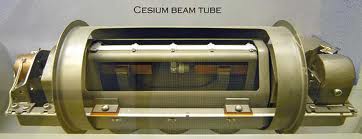Cesium is chemical element with the symbol Cs and an atomic weight of 55. It was discovered in 1860 by Robert Bunsen and Gustav Kirchhoff with the new flame spectroscopy method. It is a soft, silvery gold alkali metal with a melting point of 28° C or 82° F and is one of only five elemental metals that is liquid near room temperature. It is highly reactive and pyrophoric. In open air, it will burst into flames and it reacts explosively with water. Cesium can form compounds with many other metals. It readily forms phosphate, acetate, carbonate, halide, oxide, nitrate and sulfate salts.
Cesium is a relatively rare element at 45th in abundance. Because of its structure, it crystallizes last when magma cools and is found mostly in zone deposits of granite. The only commercial ore is pollucite which in a mineral of cesium, aluminum, silicon and oxygen. Two thirds of the worlds reserves are found in high grade ore in Manitoba, Canada. There are also deposits in Zimbabwe and Namibia in Africa.
Cesium has 40 isotopes from atomic weight of 112 to 151 with only Cs-133 being stable. All the rest are radioactive with half-lives ranging from Cs-122m1 and Cs-126m1 at less than one millionths of a second to Cs-135 with a half-life of 2.3 million years. Almost all radioisotopes of cesium are produced in nuclear explosions or nuclear reactors by fission processes or by decay of fission products. Cs-137 with a half-life of 30 years accounts for most of the radioactivity in spent nuclear fuel for several hundred years. Because isotopes of cesium are created by decay of isotopes of radioactive xenon gas, if there is a release of radioactive materials from a nuclear accident, Cs-137 can be produced far from the site of the accident. Decay of Cs generates beta particles and gamma rays.
Commercial uses of non-radioactive cesium include use in photoelectric and solar cells due the fact that light can free electrons from the cesium atom. Its high reactivity makes it useful for clearing out the remaining gases in the manufacture of light bulbs. It is also used as a catalyst for the hydrogenation of a few organic compounds. Ion propulsion systems for space craft have been created using cesium which is 140 times more efficient than burning any other know liquid or solid.
Cesium-137 is recovered by reprocessing spent nuclear fuel. Atomic clocks are constructed by exciting Cs-137 with a beam of energy and measuring the radiation of the outer electrons in the electron shell. It can be used to calibrate radiation detection equipment. The gamma radiation emitted by Cs-137 is used in industry for density measurements of fluid flow and thickness of materials. It is sometimes used in cancer therapy. Because Cs-137 is entirely man-made and only entered the environment after the detonation of nuclear bombs, it can be used to determine if a sealed container was made before or after the start of the atomic age in the 1940s. Mishandling of Cs-137 has resulted in radioactive contamination of steel produced by recycling scrap metal. Cs-137 is dangerous and ingestion of less than one thousandth of a gram per kilogram is lethal within weeks.
